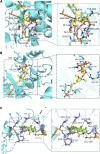Identification of pharmacokinetic markers for safflower injection using a combination of system pharmacology, multicomponent pharmacokinetics, and quantitative proteomics study
- PMID: 36506545
- PMCID: PMC9727182
- DOI: 10.3389/fphar.2022.1062026
Identification of pharmacokinetic markers for safflower injection using a combination of system pharmacology, multicomponent pharmacokinetics, and quantitative proteomics study
Abstract
Safflower injection (SI), a water-extract preparation from safflower (Carthamus tinctorius L.), has been widely used for the treatment of cardio-cerebrovascular diseases. This work aims to develop an approach for identifying PK markers of cardiovascular herbal medicines using SI as a case study. Firstly, qualitative and quantitative analyses were performed to reveal ingredients of the preparation via HPLC-MS. Subsequently, multiple PK ingredients and integrated PK investigations were carried out to ascertain ingredients with favorable PK properties (e.g., easily detected at conventional PK time points and high system exposure) for the whole preparation. Next, ingredients against cardiovascular diseases (CVDs) in the preparation were predicted with target fishing and system pharmacology studies. Finally, ingredients with favorable PK properties, satisfactory PK representativeness for the preparation, and high relevance to CVDs were considered as potential PK markers. Their therapeutic effect was further evaluated using the H2O2-induced H9c2 cardiomyocyte-injured model and a proteomics study to identify objective PK markers. As results, it disclosed that SI mainly contains 11 ingredients. Among them, five ingredients, namely, hydroxysafflor yellow A (HSYA), syringin (SYR), p-coumaric acid (p-CA), scutellarin (SCU), and p-hydroxybenzaldehyde (p-HBA), showed favorable PK properties. HSYA, SYR, and rutin (RU) were predicted to show high relevance to CVDs and screened as potential PK markers. However, only HSYA and SYR were confirmed as therapeutic ingredients against CVDs. Combined with these findings, only HSYA demonstrated satisfactory representativeness on PK properties and therapeutic effects of multiple ingredients of the preparation, thereby indicating that HSYA is a potential PK marker for the SI. The results of this study can provide a reference for the characterization of PK markers for traditional Chinese medicines.
Keywords: PK marker; hydroxysafflor yellow A; multicomponent pharmacokinetics; quantitative proteomics; safflower injection; system pharmacology.
Copyright © 2022 Shi, Ruan, Zhong, Teng, Ke and Yao.
Conflict of interest statement
The authors declare that the research was conducted in the absence of any commercial or financial relationships that could be construed as a potential conflict of interest.
Figures








Similar articles
-
Identification of Pharmacokinetic Markers for Guanxin Danshen Drop Pills in Rats by Combination of Pharmacokinetics, Systems Pharmacology, and Pharmacodynamic Assays.Front Pharmacol. 2018 Dec 21;9:1493. doi: 10.3389/fphar.2018.01493. eCollection 2018. Front Pharmacol. 2018. PMID: 30622470 Free PMC article.
-
Comparative Analysis of the Effects of Hydroxysafflor Yellow A and Anhydrosafflor Yellow B in Safflower Series of Herb Pairs Using Prep-HPLC and a Selective Knock-Out Approach.Molecules. 2016 Nov 6;21(11):1480. doi: 10.3390/molecules21111480. Molecules. 2016. PMID: 27827969 Free PMC article.
-
An Integrated Pharmacokinetic Study of an Acanthopanax senticosus Extract Preparation by Combination of Virtual Screening, Systems Pharmacology, and Multi-Component Pharmacokinetics in Rats.Front Pharmacol. 2020 Aug 14;11:1295. doi: 10.3389/fphar.2020.01295. eCollection 2020. Front Pharmacol. 2020. PMID: 32922299 Free PMC article.
-
Hydroxysafflor yellow A: a natural pigment with potential anticancer therapeutic effect.Front Pharmacol. 2025 Jan 14;15:1495393. doi: 10.3389/fphar.2024.1495393. eCollection 2024. Front Pharmacol. 2025. PMID: 39877386 Free PMC article. Review.
-
Hydroxysafflor Yellow A: A Promising Therapeutic Agent for a Broad Spectrum of Diseases.Evid Based Complement Alternat Med. 2018 Sep 25;2018:8259280. doi: 10.1155/2018/8259280. eCollection 2018. Evid Based Complement Alternat Med. 2018. PMID: 30356354 Free PMC article. Review.
Cited by
-
Chemical composition, pharmacology and pharmacokinetic studies of GuHong injection in the treatment of ischemic stroke.Front Pharmacol. 2023 Sep 7;14:1261326. doi: 10.3389/fphar.2023.1261326. eCollection 2023. Front Pharmacol. 2023. PMID: 37745083 Free PMC article. Review.
-
A biophoton method for identifying the quality states of fresh Chinese herbs.Front Pharmacol. 2023 Mar 20;14:1140117. doi: 10.3389/fphar.2023.1140117. eCollection 2023. Front Pharmacol. 2023. PMID: 37021045 Free PMC article.
-
Safflower injection against obesity-induced mice podocyte injury by improving insulin resistance through increasing renal INSR and eNOS expression.Ren Fail. 2025 Dec;47(1):2482888. doi: 10.1080/0886022X.2025.2482888. Epub 2025 Apr 21. Ren Fail. 2025. PMID: 40259553 Free PMC article.
References
-
- Fan J., Qin X., Li Z. (2019). Molecular docking and multivariate analysis studies of active compounds in the safflower injection. J. Liq. Chromatogr. Relat. Technol. 42 (19-20), 673–680. 10.1080/10826076.2019.1665540 - DOI
-
- Gu S., Tan J., Li Q., Liu S., Ma J., Zheng Y., et al. (2020). Downregulation of LAPTM4B contributes to the impairment of the autophagic flux via unopposed activation of mTORC1 signaling during myocardial ischemia/reperfusion injury. Circ. Res. 127 (7), e148–e165. 10.1161/CIRCRESAHA.119.316388 - DOI - PubMed
LinkOut - more resources
Full Text Sources
Research Materials
Miscellaneous

